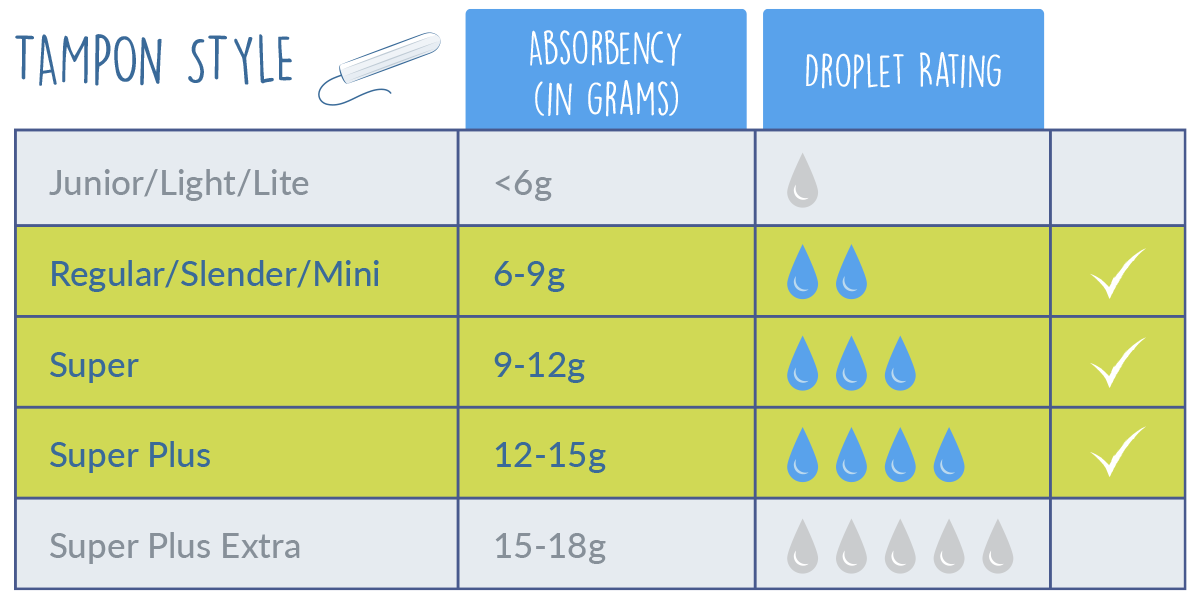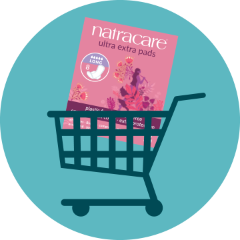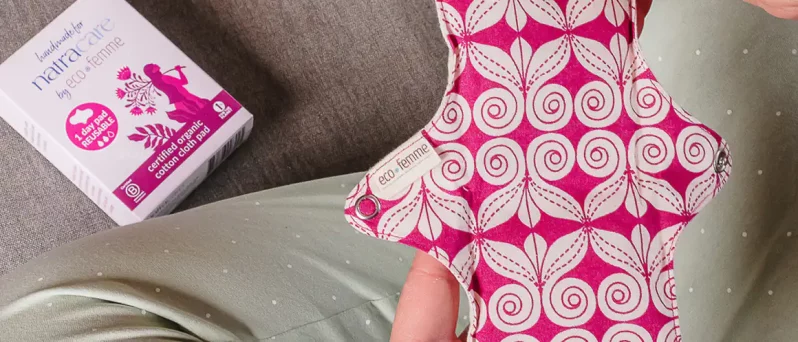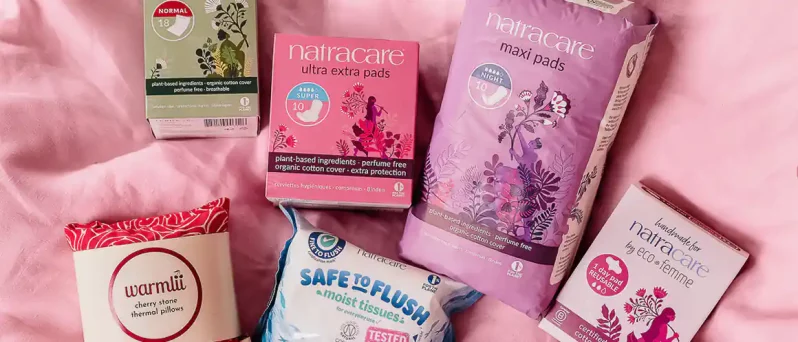
FAQs
I’ve got a question about…
Ingredients & Materials
Periods & Health
Ethics
Composting, Recycling & Disposal
Buying Natracare Products
Wholesale & Trade
Ingredients & Materials
Do Natracare tampons contain heavy metals?
We share consumers concerns for the discovery of heavy metals found in some brands of tampons. It’s a founding principle of Natracare, since 1989, to make organic tampons to help reduce unnecessary exposure to chemicals of concern. To guarantee the safety and quality of our tampons, we’re certified to the Global Organic Textiles Standard – the gold standard for tampons.
As part of our annual organic certification audit, tests for detecting heavy metals were commissioned by our certifier, The Soil Association, by third-party accredited laboratories. We’re making our test results publicly available to offer peace of mind and to offer full transparency.
Natracare organic tampons showed no detectable traces of heavy metals or other chemicals of concern.
View test report for presence of heavy metals in Natracare Applicator Regular tampons – 2024 [PDF]
View test report for presence of heavy metals in Natracare Applicator Super tampons – 2024 [PDF]
View test report for presence of heavy metals in Natracare Applicator Carboard Tube tampons – 2024 [PDF]
View test report for presence of heavy metals in Natracare Digital Regular tampons – 2024 [PDF]
View test report for presence of heavy metals in Natracare Digital Super tampons – 2024 [PDF]
View test report for presence of heavy metals in Natracare Digital Super Plus tampons – 2024 [PDF]
View test report for presence of heavy metals in Natracare tampons – 2023 [PDF]
Do your products contain corn?
We use corn starch for the leak-proof layer on the back of our pads and panty liners. The film is suitable for those who suffer from corn allergies. The protein or allergen is entirely absent from the starch films.
We use GMO-free corn, which is sustainably sourced as a waste by-product from growing crops.
Do your products contain gluten?
Natracare tampons, pads, liners and wipes are gluten-free and produced in a gluten-free environment.
We have a full ingredients list printed on all of our packaging
Do your products contain latex?
Natracare products do not contain latex. We don’t state “Latex Free” on our packs because of USA packaging requirements.
Latex is used to make the wings on a sanitary pad more flexible. Often you won’t know if there is latex in menstrual products, so if you have a latex allergy you could experience rashes and irritation when using a pad.
Natracare does not use latex, and we have a full ingredients list printed on our packaging.
Do your products contain super absorbent polymers?
Natracare products do not contain super-absorbent polymers (SAPs).
Super-absorbent material (made from petroleum) is used to prevent leakages and absorb moisture. These materials are cheap, effective and they’re harmful to the planet and our health. Natracare pads are made from only sustainable natural materials, which are biodegradable.
Do your products contain plastic?
Natracare products do not contain any petroleum-based plastics.
Most conventional pads contain plastics like polypropylene and super absorbent polymers (SAPs). These materials are cheap, effective and they’re harmful to the planet and our health. Natracare pads and panty liners are backed with a home-compostable plant-based plastic made from renewable materials.
Do your products contain resorcinol?
No. None of our products contain Resorcinol. Resorcinol is an ingredient found in some adhesives that’s linked to thyroid disruption and is a chemical of concern. We use a medical grade synthetic rubber as the glue in our pads and liners – our products pages have a full breakdown of our glue in the ingredients lists.
Do your products contain something else?
If there is an ingredient or allergen we haven’t covered yet, and you are worried about it — please ask us and we’d be happy to help. We also have a full ingredients list on our product pages.
What is a typical tampon made from?
Tampons typically contain the following ingredients and materials:
- Plastic non-biodegradable applicator
- Pesticide sprayed GM-cotton
- Rayon
- Perfume and dyes
What is a typical pad made from?
Pads typically contain the following ingredients and materials:
- Plastic-based cover
- Wood pulp (contributing to deforestation if uncertified and chlorine-bleached)
- Superabsorbent polymers SAPs (made from crude oil and can lead to skin irritation)
- Perfume and dyes
- Latex (to make the wings on a pad flexible)
Who certifies your cotton?
Farmers growing organic cotton used for all Natracare products, are certified according to international organic farming standards as well as to the USDA National Organic Program (NOP) Regulation. These cotton farms are audited annually by Control Union, an accredited organic certifier, and out of precaution, the cotton is also tested for the absence of pesticides and GMOs. Transaction Certificates follow our organic cotton from the field to processing.
All the cotton used for Natracare products is certified to the Global Organic Textile Standard (GOTS). In our case, also by Control Union.
- The Soil Association certifies Natracare tampons and wipes.
- ICEA and Ecocert IMO certify the organic cotton used for Natracare pads and panty liners.
What does “cotton-like” mean on packaging?
Cotton-feel or cotton-like are ways of falsely tricking you into thinking something is made from cotton without actually breaking the trade description laws. These “cotton-like”, “cotton-soft” covers use synthetic materials and do not contain any cotton fibres. We’re into honest marketing and honest materials.
What’s the difference between conventional cotton and certified organic cotton?
Cotton is the world’s most heavily sprayed crop. Between conventional and organic there are huge differences in the cottonseed used, the way cotton is farmed and the way it is processed. Organic means no GM farming and no toxic pesticides sprayed on the cotton.
∟
Periods & Health
How to insert an applicator tampon
Here’s our step-by-step guide to inserting your applicator tampons:
- Wash and dry your hands and ensure you only use one tampon at a time.
- Unwrap the tampon, pull the cord out and make sure the string is secured to the tampon.
- Twist the cardboard applicator to loosen mechanism, making it easier to push.
- Place the top of the tampon at the entrance of your vagina. With your other hand, you may want to open the fold of skin around the vagina.
- Push up using your longest finger until the applicator sits into one. You should feel the tampon gently glide into your vagina. Aim the applicator upwards and backwards towards the small of the back.
- If you can still feel the tampon, it needs to be pushed in further. The cord should remain outside the vagina ready for removal.
How to insert a non-applicator tampon
Here’s our step-by-step guide to inserting your digital Natracare tampons:
- Wash and dry your hands and ensure you only use one tampon at a time.
- Unwrap the tampon by holding the rounded end in one hand, remove the coloured tear strip and pull the wrapper from the cord end. Pull the cord out and make sure the string is secured to the tampon.
- Ease your longest finger gently into the cord end of the tampon, flaring the cotton a little.
- With your other hands, open the fold of skin around the vagina if necessary. Gently glide the tampon well into your vagina, upwards and backwards towards the small of the back.
- If you can still feel the tampon, it needs to be pushed in further. The cord should remain outside the vagina ready for removal.
How to remove a tampon
To remove your tampon:
- Wash your hands.
- Relax your pelvic muscles and gently pull the withdrawal cord downwards and forwards until the tampon is removed.
- Wrap the tampon in tissue or its wrapper, and discard in waste disposal, septic tank or compost.
What tampon absorbency should I use?
Always use the lowest absorbency to match your menstrual flow. See options here:

Should I use scented period products?
You never need to use a perfumed pad or tampon. These are totally unnecessary and often smell awful.
Scented products follow the idea that periods and vaginas are gross and need covering up and disguising. This is not true.
It is important to keep your labia clean. Wash and change period products regularly.
I have a question about… periods, puberty and/or using period products?
We have loads of helpful information about periods, puberty and products available here:
Why do gynaecologists recommend Natracare?
Many gynaecologists recommend women with sensitive skin use Natracare. Natracare reduces contact with chlorine bleached materials, latex, plastic and super absorbents made from petrochemicals.
∟
Ethics
Do you test on animals?
No. Natracare aims to care for all living things. We’re certified Vegan by The Vegetarian Society of the UK – this covers us as a company and all of our products!
Our vegan and animal testing policy
Our environmental and ethical policy
What are your corporate social responsibility practices?
We strive to work in a way which will always benefit people, plants and our planet. We do this in different ways:
- Sustainably sourced products
- Sustainability in the workplace
- Staff wellbeing policies
- Financial donations to charities and organisations
You can also read our full environmental and ethical policy.
∟
Composting, Recycling & Disposal
Can I compost your pads, panty liners and tampons?
Yes, Natracare products are compostable. Resources and further information below:
Composting menstrual products
How long pads take to compost
How long tampons take to compost
Can I flush pads, panty liners and tampons?
No. Flushing is bad news, even for biodegradable products like Natracare.
Can I flush wet wipes?
Only flush your three P’s — pee, paper and poo. Many wipes are made with plastic or viscose so contribute to fatbergs and plastic-pollution. Even our biodegradable wet wipes made with cotton shouldn’t be flushed.
The good news is you can flush our Fine to Flush certified Moist tissues as they are made with paper.
Do Natracare products expire?
Yes, our products are biodegradable, so over time they will lose quality. Natracare wipes have an expiry of two years. Natracare tampons, pads and panty liners have an expiry date of three years. You can find the expiry date printed on the packaging.
Storage: Please store Natracare products in a cool, dry place away from direct sunlight or high humidity. This will help ensure you are getting the best performance and quality from us!
If you need more information or want to check a pack you’ve purchased with us, please get in touch.
Is Natracare packaging recyclable?
All Natracare packaging is designed to be either recyclable or compostable. We use recycled cardboard for most of our packs.
Visit individual product pages for more information or check your packaging for details.
∟
Buying Natracare Products

Can I buy Natracare products near me?
We hope so! Please visit our stockists’ page for further information.
Do you offer Natracare coupons?
We do not offer coupons, but we have regular promotions on products. Keep an eye on the shelves in your local store for offers.
Does Natracare offer samples to international customers?
Unfortunately, we are unable to offer samples to customers outside the UK or USA due to environmental costs. Some local retailers of Natracare offer samples, find your local stockist to ask here
∟
Wholesale & Trade
How can I update/access the latest Natracare pack images?
You can download the latest Natracare pack images from the Natracare resource centre to update your website, online store or to use in your marketing activities.
What POS do you offer?
You can view our available point of sale here. Add to your next order with us or get in touch see if we can send direct.
I’d like POS or samples to support sales
If you’re a current customer, you can add point of sale to your next order with us. If you buy Natracare via a wholesaler or distributor, check to see they offer Natracare POS. Alternatively, get in touch to see if we can send direct.
I’m an independent retailer selling Natracare. Who can I contact for support?
Get in touch via our contact form and a member of the team will reply as soon as they can with options for how we can support you.
How do I set up a trade account with Natracare?
Please fill in our contact us form and provide as much information as you can about your company, retail channels and interest in Natracare. A member of our team will reply as soon as they can with the best options for getting you selling Natracare.
Can I buy direct from Natracare?
Depending on the size of your company, where you’re based and who you sell to, we offer different options for becoming a Natracare reseller. Please fill in our contact us form and provide as much information as you can about your company, retail channels and interest in Natracare. A member of our team will reply as soon as they can with the best options for getting you selling Natracare.
Do you offer credit limits for new accounts?
New accounts are typically set up on a proforma basis for the first three orders. After that, a credit limit will be set with your account manager based on expected order frequency and quantity. Please get in touch if you have any questions.
(UK only) Can I purchase period products to provide for free in our bathrooms?
We believe that sustainable and organic period products should be available to all. We offer Vending Units for bathrooms in workplaces, public facilities, universities and schools.
If this is something you’re interested in or you’d like to find out more, please get in touch via our contact form and a member of the team will contact you as soon as they can.
How do I keep up with Natracare news?
You can keep up with the latest Natracare news by signing up to our trade newsletter, you will receive quarterly updates about product, industry and Natracare news. Alternatively, give us a follow on our LinkedIn.
I’m an Influencer, Blogger or Journalist — can I work with Natracare?
If you wish to do an article, partnership or review — we would love to hear from you! Just send us through links to the relevant channels and your proposal or questions.
My question isn’t listed here!?
Please ask us! We are more than happy to try and help with any queries you may have.








